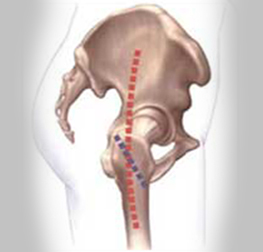- +91 9820036852
- sanjeev.jain@hiranandanihospital.org
- drsanjain@hotmail.com
Minimally Invasive Hip Replacement
The hip is one of the largest weight-bearing joints.
Minimally Invasive Hip Replacement

Minimally Invasive Total Hip Replacement
Over the past several years, orthopaedic surgeons have been developing new techniques, known as minimally invasive hip replacement surgery, for inserting total hip replacements through smaller incisions. It is hoped, but not yet proven, that this may allow for quicker, less painful recovery and more rapid return to normal activities.Minimally invasive and small incision total hip replacement surgery is a rapidly evolving area. While certain techniques have proven to be safe, others may be associated with an increased risk of complications such as nerve and artery injuries, wound healing problems, infection, fracture of the femur and malposition of the implants, which can contribute to premature wear, dislocation and loosening of your hip replacement. Patients who have marked deformity of the joint, those who are heavy or muscular, and those who have other health problems, which can contribute to wound healing problems, appear to be at higher risk of problems.
Minimally Invasive Hip Replacement
Total hip replacement can be performed in the traditional method with 10 inches to 12 inches incision. Minimally invasive surgery (MIS) involves smaller incision and minimal soft tissue and muscle disruption.Minimal incision hip replacement surgery lets the surgeon perform hip replacement through one smaller incision. Compared with most people getting hip replacements, candidates for minimal incision procedures are typically thinner, younger, healthier and more motivated to have a quick recovery.
Before you decide to have a minimally invasive hip replacement, get a thorough evaluation from the operating surgeon. Discuss with him or her about the risks and benefits. Both traditional and minimally invasive hip replacement procedures are technically demanding. They require that the surgeon and operating team have considerable experience.
The artificial implants used for the minimally invasive hip replacement procedures are the same as those used for traditional hip replacement. Specially designed instruments are needed to prepare the socket and femur and to place the implants properly. The artificial hip is implanted in the same way. But there is less soft-tissue dissection than with longer incisions.
A single minimally invasive hip incision may measure only 3-inches to 6-inches. It depends on the size of the patient and the difficulty of the procedure. The incision is usually placed over the outside of the hip. The muscles and tendons are split or detached, but to a lesser extent than in the traditional hip replacement operation. They are routinely repaired after the surgeon places the implants. This helps healing. It helps prevent dislocation of the hip.
Potential Advantages of MIS
- Less pain
- Less blood loss
- More cosmetic incisions
- Less muscle damage
- Rehabilitation is faster
- Shorter hospital stay
- for traditional knee and hip replacement, the average hospital stay is five to seven days. Many patients need extensive rehabilitation afterward. With less invasive procedures, the hospital stay may be as short as two to three days.
.jpg)
MIS is not Suitable for Everyone
Successful candidates for this type of surgery are generally at a healthy weight, in good health, younger than traditional joint replacement patients and must be motivated to work at their recovery. Individuals who are obese or who have had previous hip surgery are generally not suitable candidates. The decision to have this type of surgery must be made after a careful evaluation by the surgeons, and a discussion of the risks and benefits of MIS compared to traditional joint replacement.